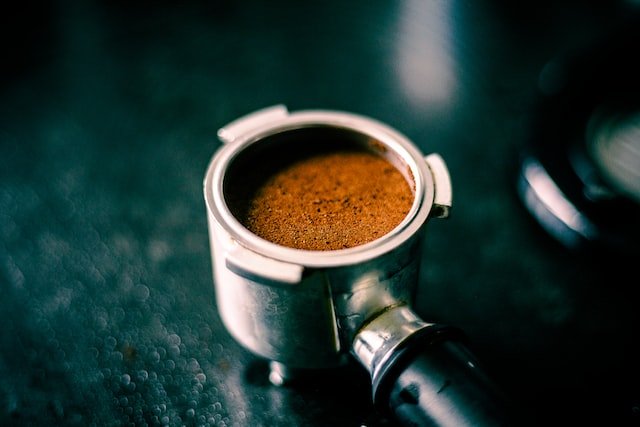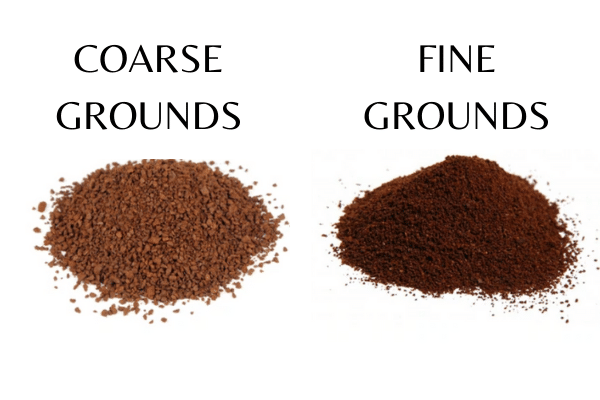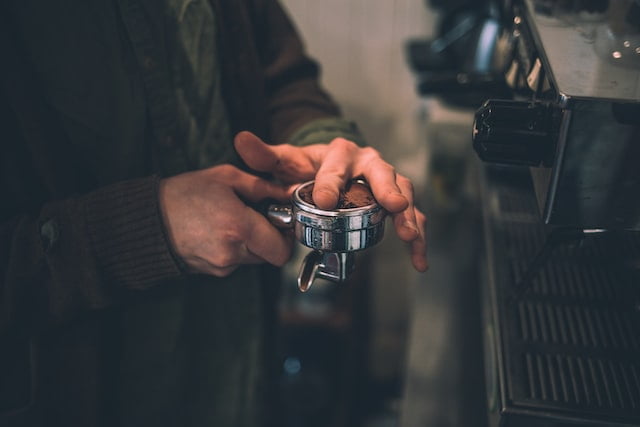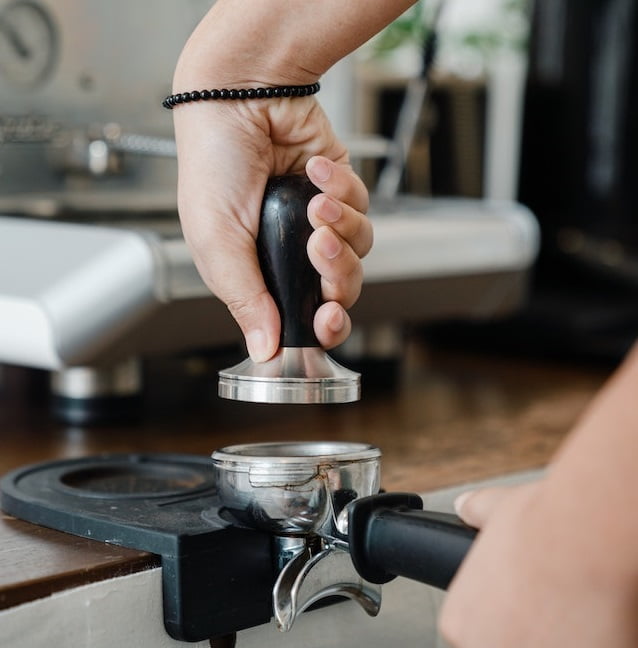The top reasons why your Espresso puck is too wet are using uneven or wrong grind size, not distributing or tamping the coffee grounds properly in the portafilter, using fewer coffee grounds, or using the wrong portafilter basket.
A dry and consistent puck is one of the most important aspects of a good cup of espresso, which can be challenging to obtain at times.
A wet puck can cause a harsh taste, clogging, and uneven shots (Not necessarily, though!).
In this blog post, I will discuss the potential causes of wet coffee puck and provide some solutions to help you achieve a dry and consistent espresso puck.

Key Takeaways
- Wet puck is not necessarily a problem if the shot tastes good
- Wet Coffee Pucks indicate improper extraction or clogging in the machine in most cases
- Focus on taste, time, crema, aroma, and mouthfeel – not just puck.
- Experiment with grind, dose, and distribution to optimize extraction.
is Wet Espresso puck Really a Problem?
In my experience, I’ve pulled plenty of shots using different types of coffee beans and different grind sizes, and I often pay attention to the Espresso puck as it settles after the shot is pulled.
Sometimes it is completely dry, sometimes it is watery and soupy, and sometimes it sticks in the portafilter.
And I can say for sure that a wet puck isn’t necessarily a problem if the outcome is a great shot.
But it is definitely a good practice to examine the puck so you can use it to replicate the brewing parameters if things go well.
Your espresso puck could be wet because your espresso machine is pulling additional water after the shot is extracted, causing the coffee puck to become too wet. In that case, it’s not a problem if the shot of espresso tastes good. Because that’s what really matters.
The main thing is the proper extraction of flavors from the coffee grounds
The quality and flavor of the espresso shot may suffer if the extraction procedure is not done properly, and a wet coffee puck might be a concern in some cases.
Under-extracted coffee: If your espresso shot tastes sour or under-extracted that might be a problem because of the watery puck.
Machine gets dirty: In some cases, a watery puck will mess up a machine and get the group head clogged with used coffee grounds, causing inconsistent shots.
For Making a better shot of Espresso read a guide on Dial in Espresso Machine
5 Reasons Why Your Espresso Puck is Wet and how to fix it
If your espresso doesn’t taste great and you’re not feeling confident about the results, you can try experimenting with these factors to improve your shot.
After understanding these reasons you can surely fix a wet espresso puck.
Reason 01: Using the Wrong Grind Size
The wrong grind size can contribute to a wet espresso puck.
- If the grind size is too fine, the coffee will become over-extracted, and the resulting espresso will be too bitter. It can cause the water to remain in contact with the coffee for too long, resulting in a wet and soggy puck.
- If the grind size is too coarse, the water will flow through too quickly, and the coffee won’t have enough time to extract correctly. It can result in an under-extracted shot and a dry, crumbly puck fast falling apart.

Reason 02: Uneven Grind Size Distribution
When the coffee grounds are not evenly sized, the water will flow through the puck at different rates, causing some areas to be over-extracted while others to be under-extracted. It can result in a wet and soggy puck that falls apart easily.
If you are using a blade grinder do yourself a favor and invest in a burr grinder as a blade grinder never gives consistent results.
How to have an even grind size distribution?
- Invest in a grinder that produces consistent particle sizes. A burr grinder is recommended over a blade grinder as it provides a more consistent grind size.
- Residual coffee oils and particles can build up in your grinder over time, affecting the grind quality. Clean your grinder regularly to remove any buildup.
- Always purge the grinder after changing the grind size.
- A distribution tool or Weiss Distribution Technique (WDT) can help to distribute the coffee grounds evenly in the portafilter before tamping, promoting a more even extraction and a dryer puck.
Reason 03: Using the Wrong Portafilter/Basket
A wet coffee puck can also be caused by using an improper portafilter or basket.
How to have the correct portafilter?
- If you are experiencing a wet puck, you may need to adjust the basket depth or try a different basket that works best with the amount of coffee grounds you are using.
- The correct size and shape of the basket are critical for achieving a consistent espresso shot. The basket should fit snugly into the portafilter, and you should evenly distribute the coffee grounds within the basket before tamping.
Portafilters are designed to handle specific doses, so be sure to always use a dose that matches the portafilter’s capacity. If the portafilter is designed for 14 grams put 14 grams in it or plus and minus 3 grams. And never use a double-shot portafilter basket for pulling a single shot.
Read a detailed guide on Espresso Basket types

Reason 04: Using Fewer Coffee Grounds
Using fewer coffee grounds than required can also result in a wet espresso puck. When insufficient coffee grounds are in the portafilter basket, the water will pass through too quickly, resulting in a wet, under-extracted puck.
How to Have Sufficient Coffee Grounds?
Stick to the instructions written on the Portafilter basket and use the same amount of grounds as instructed by the manufacturer.
For a single shot of Espresso, use around 7-9 grams of coffee and for a double shot use 14-18 grams of coffee.
Reason 05: Empty Air pockets
Empty air pockets leave gaps between the particles. As a result, water can seep through these gaps, creating channels and bypassing some of the coffee grounds, resulting in a wet coffee puck and an under-extracted, weak espresso shot.
Tamp the coffee evenly and with the proper pressure to prevent empty air pockets in the espresso puck.
But don’t go too hard either, if you tamp the coffee grounds too much it can lead to espresso channeling or a wet espresso puck.

How Should a Perfect Espresso Puck Look like?
As I said earlier it’s not the texture of the puck, but rather the taste and quality of the shot that matter.
A perfect espresso should have the following characteristics:
- The Crema layer should be perfect. The Crema should be deep, reddish-brown, and have a smooth texture.
- The espresso should be dark brown, almost black, with a reddish-brown tint to the Crema. It shows properly extracted espresso and roasted coffee.
- A perfect espresso should have a rich and complex aroma with notes of chocolate, caramel, and toasted nuts. The smell should be strong.
- A perfect espresso should leave a pleasant and lingering aftertaste in the mouth, with notes of chocolate, fruit, or spice. The aftertaste should be clean.
If your Espresso shot matches these criteria then a wet coffee puck is not the problem you can keep brewing shots.
Final Thoughts
Hopefully, this guide has helped you understand Espresso pucks a little better.
In my experience, I have pulled some great shots with wet coffee pucks and terrible shots with dry pucks.
At the end of the day, the taste of your espresso matters more than anything else.
It can be difficult sometimes to decide what matters and what doesn’t.
So try experimenting with different grind sizes and have the right accessories to tamp and distribute the coffee grounds properly in the portafilter hopefully you will achieve the best results.
Check out Why is there too much crema on espresso




I always seem to get wet pucks when my coffee is really fresh. Maybe let it degas a bit more?
Yes, letting the beans degas for a week is a good idea, however, if the taste feels good it’s not even a problem!
Wet pucks are the worst! Makes such a mess when knocking out the portafilter.
You are right though, I have tasted best shots even with wet soggy pucks
Yes, you are tight, they make the things are messy! even though there is nothing wrong with the taste.
Finally, an explanation that makes sense! I always thought wet pucks are problem. Cheers for the advice that there is nothing to worry if shot tastes fine!
Great tips! My pucks were always soggy. Tried adjusting the grind size. Big difference. Thanks for the help!